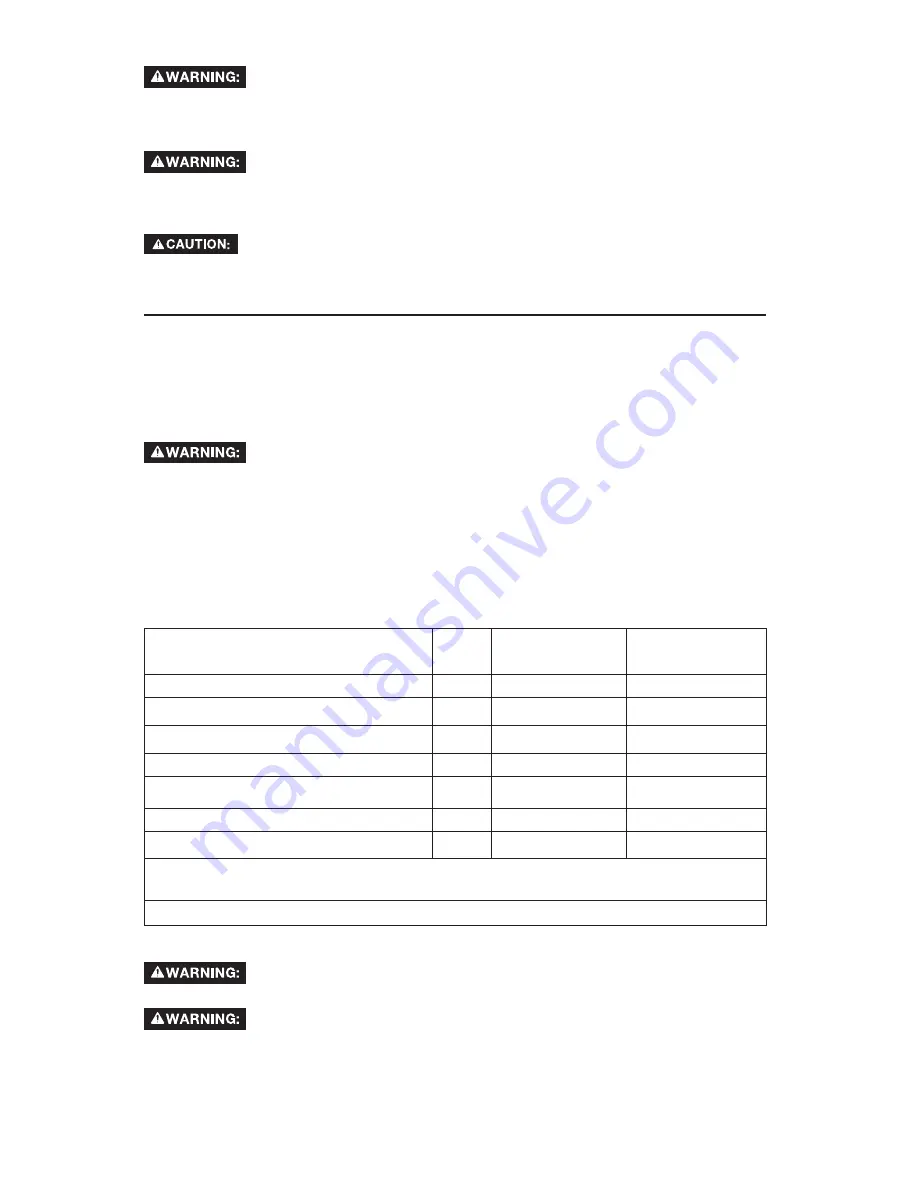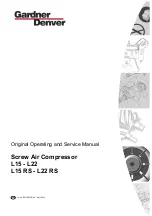
12
13
3. Remove hose and accessory.
Risk of unsafe operation. Firmly grasp air hose in hand when installing or discon-
necting to prevent hose whip.
4. Drain the air tank, see
Draining Air Tank
under Maintenance. Ensure air tank pressure
gauge reads 0 psi.
Risk of bursting. Drain air tank daily. Water will condense in air tank. If not
drained, water will corrode and weaken the air tank causing a risk of air tank rupture.
5. Allow the compressor to cool down.
6. Wipe air compressor clean and store in a safe, non-freezing area.
Risk of unsafe operation. Do not operate in vertical position. Vertical position is for
storage only.
MAINTENANCE
The following procedures must be followed when maintenance or service is
performed on the air compressor.
1. Ensure
Auto/Off
switch is in the
OFF
position.
2. Remove air compressor plug from outlet.
3. Drain air tank.
4. Allow air compressor to cool down before starting service.
All compressed air systems contain maintenance parts (e.g., oil, filters, separa-
tors) that are periodically replaced. These used parts may contain substances that are regulated
and must be disposed of in accordance with local, state, and federal laws and regulations.
NOTE:
Take note of the positions and locations of parts during disassembly to make reassembly
easier.
NOTE:
Any service operations not included in this section should be performed by a BOSTITCH
factory service center or a BOSTITCH authorized service center
MAINTENANCE CHART
Procedure
Daily
Weekly
See tank warning
label
Check safety valve
X
Inspect Air Filter (J)
X
Drain air tank
X
Check for unusual noise/vibration
X
Check for air leaks
X1
Clean compressor exterior
X
Remove tank from service
X2
1 - To check for air leaks apply a solution of soapy water around joints. While compressor is pumping
to pressure and after pressure cuts out, look for air bubbles to form.
2 - For more information, call
1-800-556-6696.
CHECKING SAFETY VALVE
Risk of bursting. If the Safety Valve (G) does not work properly, over-pressuriza-
tion may occur, causing air tank rupture or an explosion.
Risk from flying objects.
Always wear certified safety equipment: ANSI Z87.1
eye protection (CAN/CSA Z94.3) with side shields when using the compressor.
Before starting compressor, pull the ring on the Safety Valve (G) to make sure that the Safety
Valve (G) operates freely.Before starting compressor, pull the ring on the Safety Valve (G) to make
sure that the Safety Valve (G) operates freely.
Summary of Contents for CAP1645-OF
Page 53: ...53 ...













































